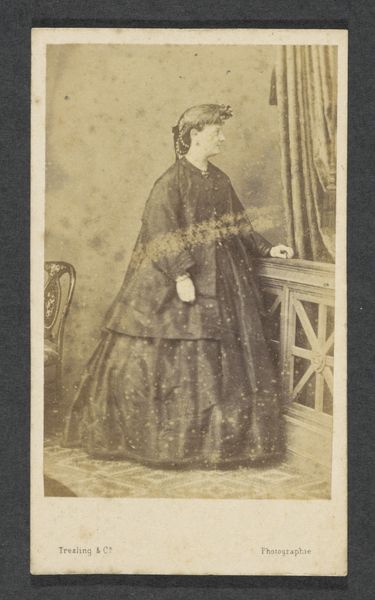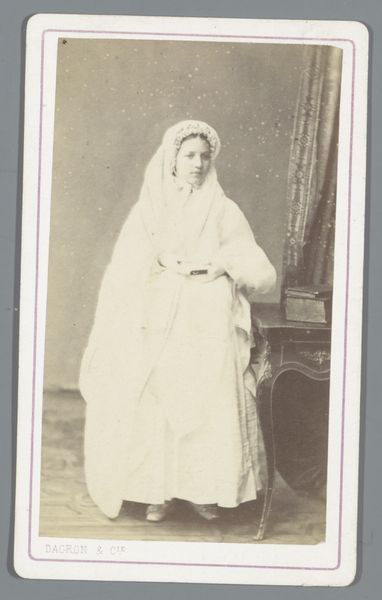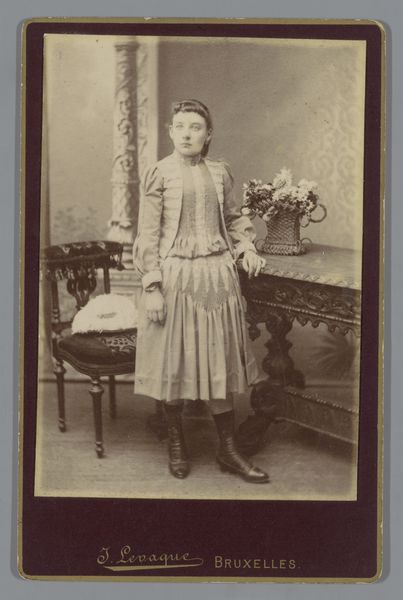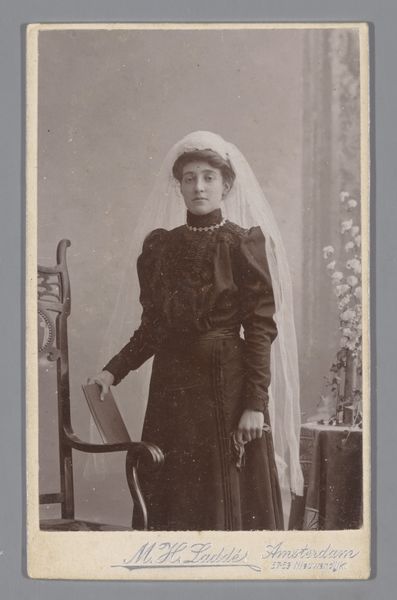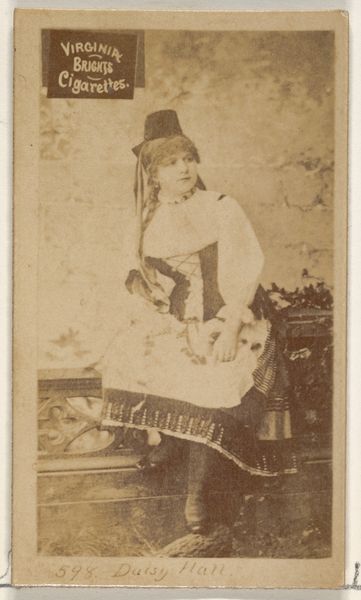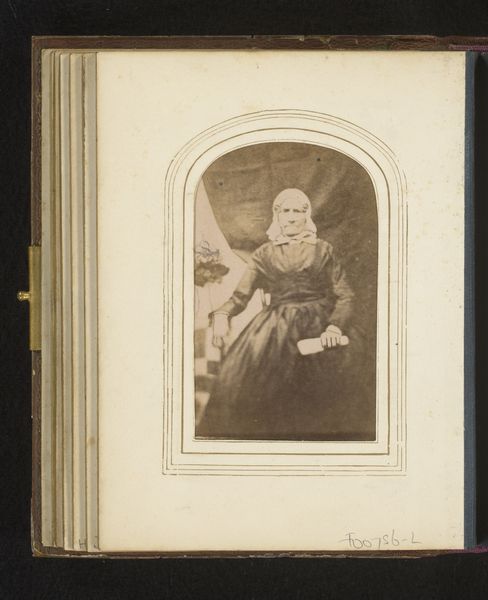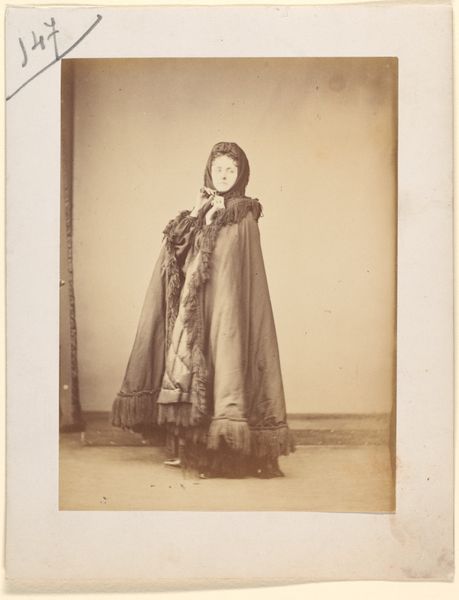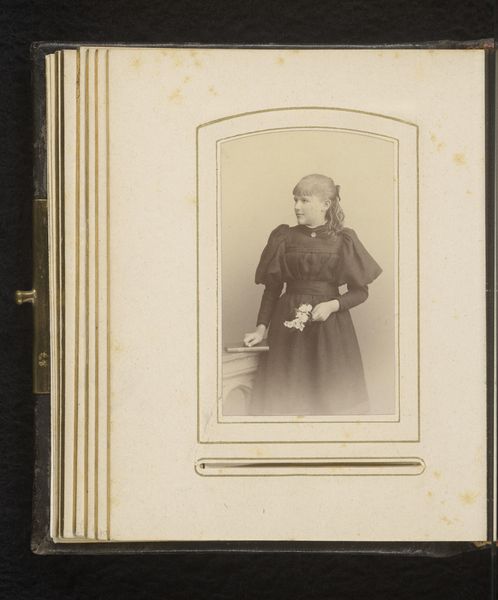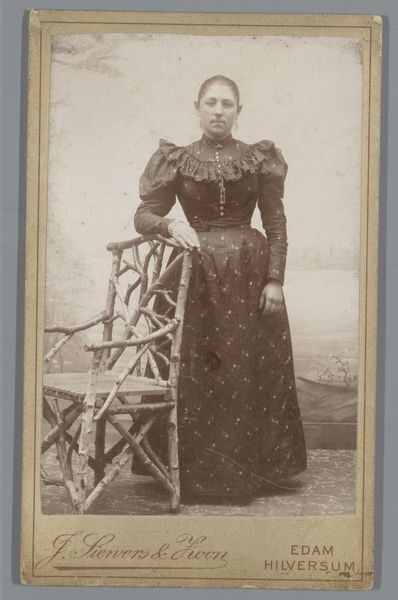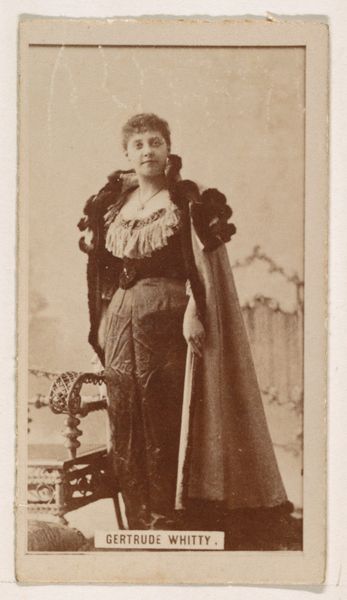
Portret van een onbekende vrouw in traditionele kleding uit Tholen, Zeeland 1880 - 1910
0:00
0:00
photography
#
portrait
#
photography
#
historical photography
#
historical fashion
#
realism
Dimensions: height 268 mm, width 208 mm
Copyright: Rijks Museum: Open Domain
Editor: Here we have "Portrait of an Unknown Woman in Traditional Clothing from Tholen, Zeeland" by Henri van den Broeck, sometime between 1880 and 1910. It’s a striking photographic portrait, the woman’s ornate lace head covering contrasting with the rough wood behind her. What stands out to you about it? Curator: It's interesting how this portrait engages with ideas of regional identity and the performance of culture. These photographic portraits, often commissioned, were tools in shaping the narrative of a nation, especially during a time of increased mobility and urbanization. Consider how the 'traditional' clothing, painstakingly documented, was used to promote a specific image of Dutch identity. Editor: So you're saying that what appears to be an accurate representation of a local woman might be serving a broader political purpose? Curator: Exactly. The museum or the patron displaying this image is, in a way, participating in the construction of a visual archive of Dutch life. And who is controlling that narrative? Who gets to define what is authentically "Dutch?" Is this an organic tradition, or is it staged and performed for the camera, perhaps even encouraged or funded by political interests invested in constructing a coherent national identity? Editor: I hadn't thought of the image as that calculated, it feels more like a neutral recording of history. Curator: Photography was never neutral. The photographer chose the pose, the setting. Even the act of commissioning such a portrait highlights a certain value being placed on this specific cultural performance. Think about who had the means to commission and collect these images, and whose stories were left untold. How might a similar image today play into contemporary discussions about immigration or cultural preservation? Editor: That is a very insightful way to look at it. I hadn’t really considered how photographs could be used in constructing national identities. Thank you for broadening my perspective on this portrait. Curator: And thank you for engaging with such thoughtful questions. It highlights the critical role of considering context when engaging with historical works.
Comments
No comments
Be the first to comment and join the conversation on the ultimate creative platform.
